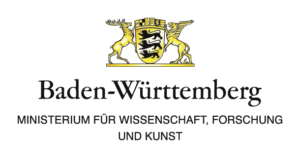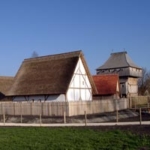Wie veränderte die Einführung der Bronze Techniken, wirtschaftlichen Abläufe und das Zusammenleben der Menschen?
Die Legierung von Zinn und Kupfer, um Bronze zu erlangen brachte zum einen eine Verbesserung des Metallflusses beim Schmelzvorgang (Zinn hat einen sehr tiefen Schmelzpunkt) zum anderen war die Bronze ein wesentlich härterer Werkstoff als reines Kupfer. Dieser ermöglichte nun die Herstellung effizienterer Werkzeuge als zuvor. Dieser Vorteil ist besonders bei der Produktion von Äxten und Beilen ersichtlich, dem schon in der Frühbronzezeit am weitesten verbreiteten Werkzeug: während die Kupferäxte eine Effizienz hatten, die nur wenig über der von neolithischen Steinbeilen lag, die übrigens während der gesamten Kupferzeit weiter produziert und genutzt wurden, waren diejenigen aus Bronze wesentlich besser und ihr Gebrauch führte in der Folge zu einer großflächigen Entwaldung und damit zu einer Öffnung der Landschaft mit größeren landwirtschaftlich nutzbaren Flächen und zusammenhängenden Grünlandbereichen für die Viehzucht. Die Bronze wurde so zu einer strategischen Ressource für die Entwicklung der Gemeinschaften und war entsprechend begehrt. Dies brachte einerseits eine verstärkte Prospektionstätigkeit in den Bergbaugebieten auf Zinn und Kupfer mit sich, andererseits eine sehr starke Zunahme der Mobilität und des Handels, um an die begehrten Rohstoffe zu gelangen. Dieses hoch geschätzte Metall wurde auch zur Herstellung wertvollen Schmucks und von Prestigeobjekten verwendet, die den hohen sozialen Rang ihres Besitzers unterstreichen sollten.
Ilaria Pulini, Parco Archeologico e Museo all’Aperto della Terramara di Montale (IT)
How were the changes in technology, economy and the social life influenced by the introduction of bronze?
The alloy of tin and copper for the production of bronze had two advantages: on the one hand the use of tin reduced the smelting point as tin smelts already at 231,9° C, on the other hand the adition of tin to copper results in a much harder material than copper: bronze. The use of bronze enabled the cratsmen to produce tools of a much higher efficiency than before. This advantage can be especially seen in the manufacture of axes. This tool was already common everywhere in the Early Bronze Age. Stone axces were used until deep in the copper age because compared to stone axes, copper axes were not very much more efficient. Bronze axes were much better. Their use caused a deforestation of large regions and therefore lead to an opening of the landscape for a more intense agriculture and to the creation of greenlands for the cattle. Bronze became a strategic resource for the development of comunities and was very sought after. The prospection of tin and copper deposits increased as well as mobility and commercial activities to get hold of the precious material. This highly desired metal was used as well for the production of jewellery and prestige goods which should stress the high social rank and status in society of the owner.
Ilaria Pulini, Parco Archeologico e Museo all’Aperto della Terramara di Montale (IT)
Quali sono i mutamenti tecnologici, economici e sociali apportati dall’introduzione del bronzo?
L’aggiunta di stagno al rame per ottenere il bronzo consente da un lato di fluidificare il metallo durante la fusione (lo stagno ha una temperatura di fusione molto bassa) e dall’altro di ottenere dei manufatti più resistenti. Ciò offre la possibilità di produrre strumenti molto più efficaci rispetto a quelli in rame. Questo vantaggio è evidente nella produzione delle asce, lo strumento più diffuso già dall’antica età del bronzo: mentre le asce di rame avevano un’efficacia solo moderatamente superiore a quella delle asce in pietra (che si continuano infatti a produrre nel corso dell’età del rame) quelle in bronzo risultano molto più efficienti e consentono di conseguenza un’attività di disboscamento più intensa, consentendo di espandere i terreni coltivabili e i pascoli. Il bronzo diventa dunque una risorsa strategica per lo sviluppo delle comunità e dunque alquanto ricercata. Ciò comporta sia un più accentuato sfruttamento minerario alla ricerca dei minerali di stagno e rame, sia una crescita esponenziale dei traffici volti a ottenere le materie prime. Il bronzo, ricercato e oggetto di scambi, è considerato prezioso e dunque si presta anche alla fabbricazione di ornamenti e oggetti di pregio con cui sottolineare un alto status sociale.
Ilaria Pulini, Parco Archeologico e Museo all’Aperto della Terramara di Montale (IT)








